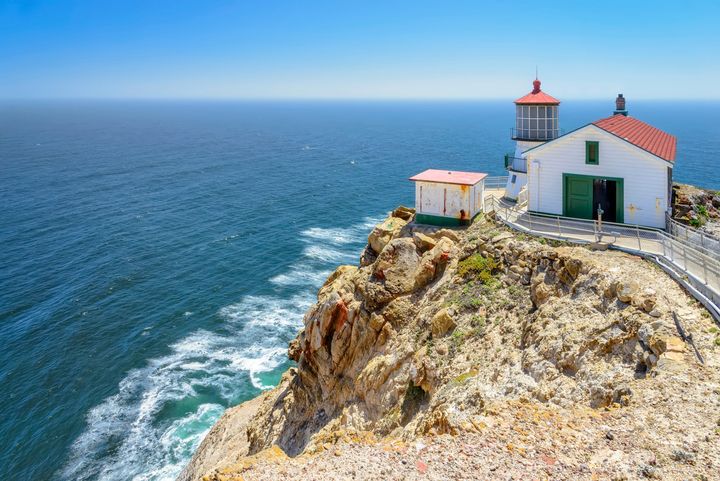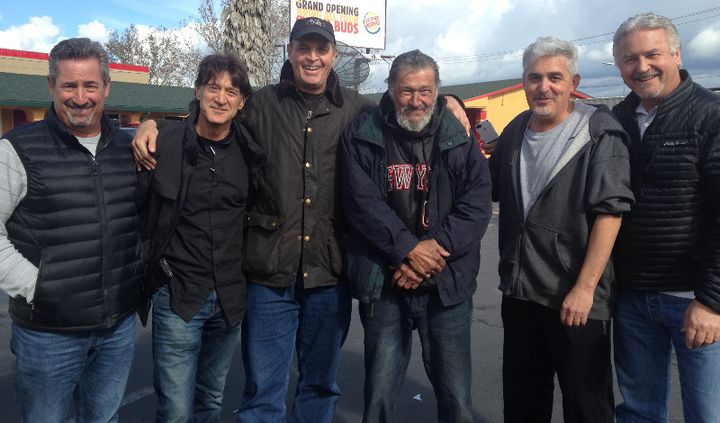SAN FRANCISCO -- Four decades after a group of California high schoolers coined the term 420, one of the holiday's biggest mysteries has been solved.
Every April 20, stoners flock to places like San Francisco's Golden Gate Park or the University of Colorado, Boulder, to celebrate the high holiday. There are many myths about why 420 became the stoner code of choice. Some (falsely) claim it's because there are 420 chemicals in THC, marijuana's psychoactive compound. Other popular origin stories link the date to Adolf Hitler's birthday, the police code for marijuana possession or the date of Bob Marley's death (which was actually May 11).
The real story, however, probably goes back to a group of high school friends in Northern California's Marin County. Of course, nobody can definitively prove they were the first person to use the term 420 to refer to weed. But what these friends can show is almost as good: They have tangible evidence they were using the term earlier than anybody else can show, and they have a plausible story, with evidence behind it, to explain how they coined the term. That doesn't necessarily mean that somebody didn't use it earlier, as some have attempted to claim, but so far no evidence backs up the alternate explanations.
In 1971, a small circle of San Rafael High School students known as the Waldos (named, they say, for the wall where they'd hang out by the school), heard that a Coast Guard service member stationed at nearby Point Reyes had been tending a secret pot crop that he could no longer take care of. Armed with a treasure map drawn by the Coast Guardsman himself, the friends would meet after school -- at 4:20 p.m. -- to try to find the stash.
Week after week, the Waldos would meet at the school's statue of Louis Pasteur, smoke a little pot, hop in Waldo Steve Capper's car and make the 40-minute trip out to Point Reyes. They never did find the crop, but 420-Louis, and then just 420, became the group's codeword for weed, something the friends could say in front of parents or teachers who weren't in the know. The term slowly but surely spread beyond Marin, thanks in part to the Waldos' ties to the Grateful Dead.
The Waldos, who revealed their identities to The Huffington Post in 2012, have enjoyed the minor fame that comes with inventing a counterculture holiday. Their story has appeared everywhere from High Times to the New York Times. They sell "420 Waldos" branded clothing on their website. Lagunitas Brewing Company even named a beer after the clique.
But the recent attacks on their story by skeptics or people claiming to have used the term earlier has galvanized members of the group to find a piece of evidence that had long eluded them. If they could find the Coast Guardsman who drafted the original weed treasure map, Capper reasoned, who could doubt them anymore?

But finding him was easier said than done. The friend who had initially given the Waldos the treasure map died in the 1980s. The Waldos also found the stigma surrounding cannabis use made it difficult to cold call people who might have had ties to the illegal grow spot.
Other leads were similarly fruitless. A tip from a HuffPost reader led the Waldos to a different Coast Guardsman once stationed at Point Reyes. Requests for help from the Coast Guardsman's ex-wife went nowhere. Public records searches dug up a few clues, but nothing ultimately useful.
In 2014, the Waldos managed to track down some critical information, including the Coast Guardsman's full name -- Gary Newman -- and place of birth. That information led them to San Jose, where some clever tactics involving a P.O. box got them closer than ever to their man. Capper even spoke to him on the phone, confirming he remembered everything from his Coast Guard days.
But meeting up with him in person proved to be just as difficult as finding him in the first place. Capper eventually decided to hire a private investigator, who was able to track him down in one of San Jose's homeless encampments earlier this year. After several failed attempts at meeting up, the Waldos found a window of opportunity. Super Bowl 50 was about to be played in nearby Santa Clara, and the city planned to clear out homeless encampments ahead of the big game. The Waldos offered to put Newman up at a motel until the game was over so it would be easier for him to meet them and talk about his time in Point Reyes.

After six years of searching, the Waldos finally came face to face with Newman in February 2016. Now 68 years old, Newman enlisted in the Coast Guard in 1967. While stationed at Point Reyes, Newman took care of the historic lighthouse. He had planted the now-famous pot crop on a patch of federal land near the lighthouse, and maintained the crop even after leaving active duty and joining the Coast Guard Reserves.
But in the fall of 1971, Newman grew nervous about getting caught. So, he drew up the treasure map and gave it to his brothers-in-law, Bill and Pat McNulty. Bill shared the map with Steve Capper, and the rest is history. Newman, meanwhile, never knew he was the inspiration for 420.
Following the motel meeting, the Waldos and Newman took a trip up to the Point Reyes lighthouse, where Newman reminisced about his time in the Coast Guard.
"It was like having a meeting with an old friend you never knew," said Dave Reddix, one of the Waldos.
Finding Newman has given the Waldos the last piece of evidence they needed to verify their 420 origin story.
"We really wanted to find this guy," said Reddix. "We wanted to slam the door shut on those trolls who said this is all a bunch of malarkey."


